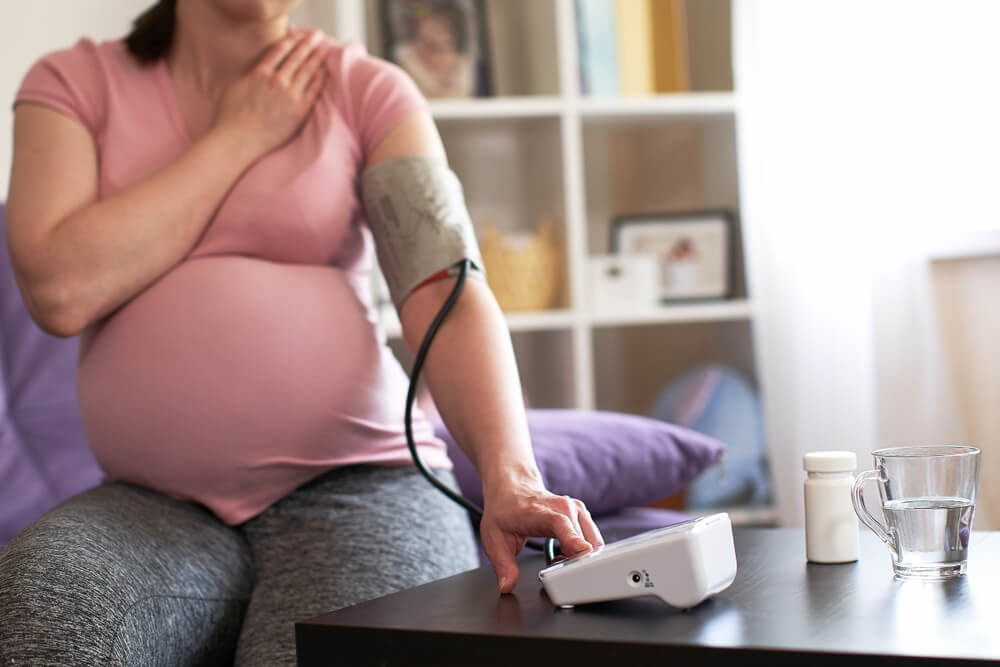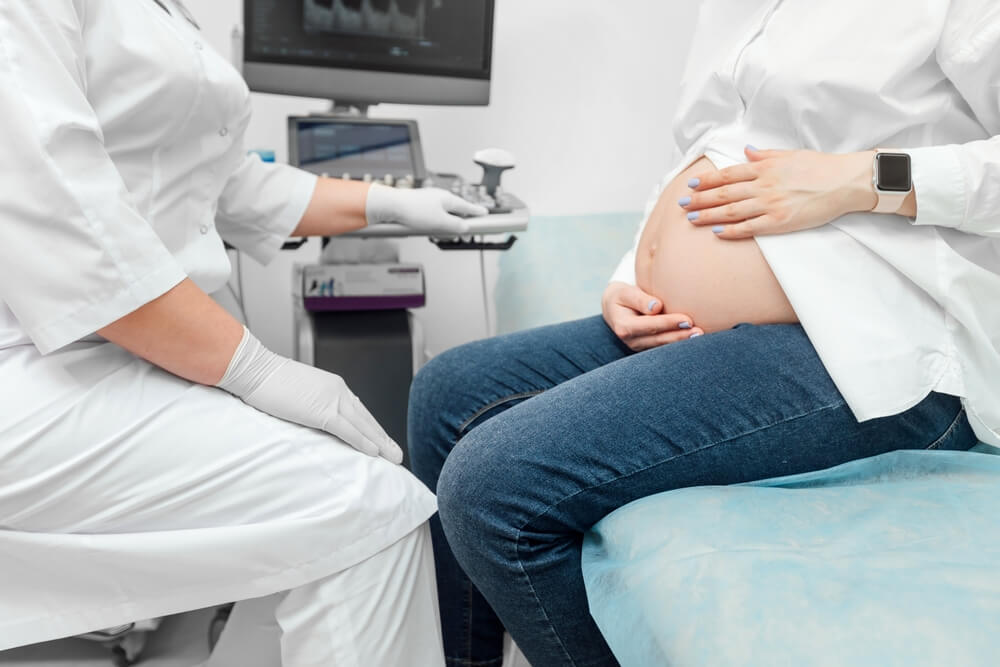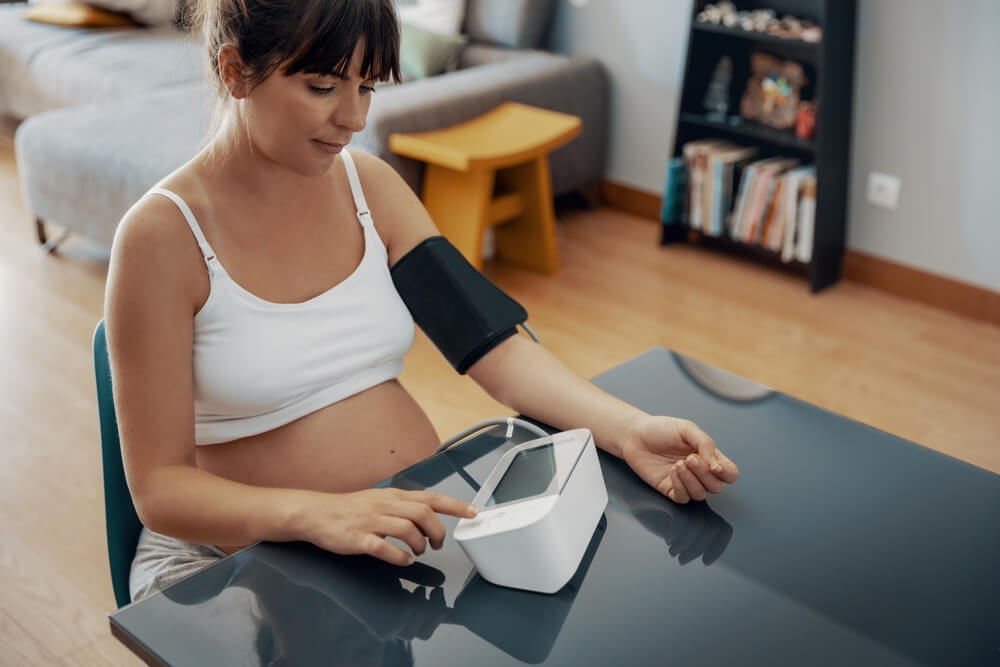Preeclampsia can be defined as a severe condition that can occur after the 20th week of pregnancy and even after giving birth (postpartum preeclampsia). It manifests as high blood pressure and may impair the work of several organs, such as the liver and kidneys. This pregnancy complication also causes hypertension (or high blood pressure), putting stress on the heart and leading to other pregnancy complications.
The experts at South Miami OBGYN Associates understand that mommies-to-be may have questions about preeclampsia and pregnancy complications. As such, if you are looking to schedule a visit with an obstetrician, or gynecologist in Miami, Florida, we highly encourage you to reach out to our practice, where our compassionate providers will be more than ready to address all your questions or concerns.
And as such, in this article, our experts will discuss the dangers of preeclampsia in pregnancy and the most common preeclampsia symptoms, and will also talk about the methods that can effectively treat this pregnancy complication.
About Preeclampsia
As mentioned above, preeclampsia is a severe pregnancy complication and health problem worldwide for pregnant women. Some sources estimate that around ten to 15 percent of maternal deaths globally are directly caused by the condition or are associated with complications like eclampsia. In the US, it affects around five to eight percent of all pregnancies, leading to preterm birth in most cases.
Still, it’s imperative to know that most women with the condition will give birth to healthy babies. Still, preeclampsia needs to be medically addressed as it can cause severe health problems both for the mother and the baby.

Preeclampsia Symptoms: What To Look For?
The following are indications and manifestations of preeclampsia:
- Elevated blood pressure, either with or without the presence of protein in the urine. Your healthcare provider will assess these factors during your prenatal appointments.
- Visual changes include blurry vision, seeing flashing lights, experiencing spots in your vision, or heightened sensitivity to light.
- Persistent headaches that do not subside.
- Pain in the upper right area of the abdomen or in the shoulder.
- Sudden weight gain, ranging from 2 to 5 pounds in a week.
- Swelling in the legs, hands, or face.
- Difficulty breathing.
Many of these signs and symptoms can be attributed to typical pregnancy discomforts. However, if you experience even one sign or symptom, it is crucial to contact your healthcare provider immediately. It is possible to have preeclampsia without realizing it. Attending all your prenatal visits, even if you feel well, is the most effective way to detect preeclampsia.
Assessing Risk Factors
Currently, the medical community doesn’t quite understand the exact causes of this pregnancy complication, but experts agree that certain risk factors may increase the odds of developing preeclampsia.
That said, the following risk factors are associated with the condition:
- Having issues with preeclampsia during previous pregnancies. Typically, the risks are higher if the condition comes along with other complications.
- If the woman carries more than one baby (twins, triplets, etc.).
- Previous problems with diabetes, hypertension, autoimmune problems, and kidney disease.
- First pregnancies are also associated with a higher preeclampsia risk.
- Being obese with a body mass index of 30 or higher.
- Having a family history of preeclampsia.
- Complications during previous pregnancies.
- Fertility treatments like in vitro fertilization or IVF may also increase the risks.
- Age: being older than 35.
Preeclampsia Complications
As mentioned above, if left untreated, preeclampsia may lead to other complications and health problems, such as:
- Liver, kidney, and brain damage
- Blood clots
- Eclampsia is a rare and potentially life-threatening condition, causing coma and seizures.
- Stroke
Preeclampsia may lead to certain pregnancy complications as well, such as:
- Preterm birth: In some cases, even with treatment, delivering the baby prematurely may be necessary to mitigate serious health risks for both the mother and the baby.
- Placental abruption occurs when the placenta detaches from the uterine wall before birth, either partially or completely. It can lead to insufficient oxygen and nutrients reaching the baby. Vaginal bleeding is a common symptom of placental abruption after the 20th week of pregnancy. If any vaginal bleeding occurs during pregnancy, it is crucial to inform your healthcare provider immediately.
- Intrauterine growth restriction (IUGR): This condition refers to inadequate fetal growth in the womb. It can occur when the mother’s high blood pressure constricts the blood vessels in the uterus and placenta. The placenta develops in the uterus and supplies the baby with nourishment and oxygen through the umbilical cord. Insufficient oxygen and nutrients reaching the baby in the womb can result in IUGR.
- Low birth weight: Babies born to mothers with preeclampsia are at a higher risk of being born with low birth weight.
Lastly, preeclampsia may increase the risk of PPH or postpartum hemorrhage, which is heavy bleeding after delivery. Also, preeclampsia may increase the risks of diabetes, heart, and kideny disease later in life.
Diagnosing and Treating Preeclampsia
To diagnose the condition, providers will usually measure the patient’s blood pressure and test their urine for protein during prenatal visits. They may recommend other lab tests as well and may use the following tests and screening methods:
- Ultrasound
- Nonstress test (to check the baby’s heart rate)
- Doppler analysis
- Biophysical profile
Treatment will depend on the severity of the condition and how far along the patient is in her pregnancy. On that note, even mild cases of preeclampsia will need treatment to ensure it won’t lead to complications.
For the most part, women with mild cases are delivered by week 37 of their pregnancy, with their provider checking their urine and blood pressure regularly. If they are at least 37 weeks pregnant with a stable condition, they may be recommended to have the baby early as it will often be safer than staying pregnant both for the baby and the mother. Medicine will be given to break the patient’s water and induce labor.
Severe cases will be closely monitored in the hospital, and experts may use antenatal corticosteroids (ACS) to speed up the baby’s lung development. Patients may also be given blood pressure medicine and compounds to prevent seizures. In severe and progressively worsening conditions, experts may recommend giving early birth (before week 34) as soon as the condition stabilizes by recommending a c-section or inducing labor.
In more severe cases with HELLP syndrome, patients will always need to give birth early.

Postpartum Preeclampsia
What causes postpartum preeclampsia? This is a rare condition that happens as a result of preeclampsia after giving birth. Typically, it develops after two days of having a baby, but it can occur up to six weeks after delivery. Postpartum preeclampsia will also need treatment and will often have the same symptoms. Experts don’t exactly know what causes postpartum preeclampsia, but the possible risk factors may be:
- Having had a C-section
- Being obese
- Having preeclampsia or gestational hypertension during pregnancy.
Contact Us To Learn More
The topic of preeclampsia is broad and detailed. We encourage you to schedule an appointment with our providers to learn more about the symptoms, diagnosis, complications, and treatment. As said above, our compassionate experts are more than ready to educate you on the topic and provide support if needed.




